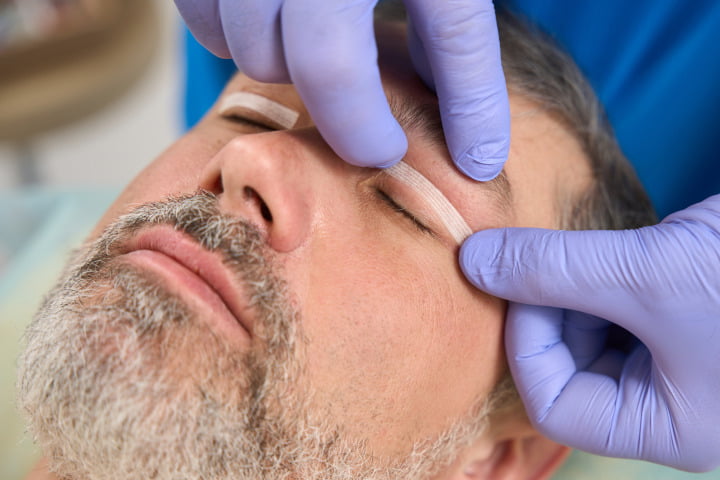A surgeon designs blepharoplasty or eyelid surgery to correct droopy or sagging eyelids.In most cases, the procedure can help to reduce the appearance of bags, wrinkles, and creases around the eyes and improve vision when necessary.
As with any surgery, the eyelid surgery procedure will leave visible scars immediately after surgery, and these scars will take a few weeks or months to completely heal and fade.
Scarring is a relatively common side effect of eyelid surgery and may persist for up to six months to a year following the procedure. While most scarring resolves on its own, some cases may require further treatment.
In some cases, the area may remain slightly pink or discolored for several weeks or months due to inflammatory pathways.
Keeping the area clean and properly moisturized can help reduce the appearance of the scar during the healing period. Scar tissue, as well as any discoloration, will slowly disappear as the body heals and the healing process progresses.
Generally, the scarring will be less visible six months after the procedure. The appearance of the scarring will depend on several factors such as the size of the incision, the patient’s healing process.
Who Should Perform Eyelid Surgery at What Age?
Typically, doctors do not recommend performing this procedure on people younger than 18-years old.
When the patient is closer to their full adult development, the best possible results can be achieved due to the change in the structure of their facial features.
In younger people, as their facial structure is still developing, it is not possible to accurately predict the full aesthetic outcome of the procedure.
Additionally, wrinkles and finer lines are less apparent in younger people due to their thinner skin, so reduction of these features is not a primary concern for most.
The surgeon can choose to perform eyelid surgery in either an ambulatory surgery center or a hospital setting.
Take time to discuss and review the details of the procedure to ensure a safe and successful outcome. We will measure the patient’s face and take photographs during the preoperative evaluation appointment.
Some patients may even have 3-dimensional imaging done prior to the surgery as part of the evaluation process. During this time prior to the surgery,





